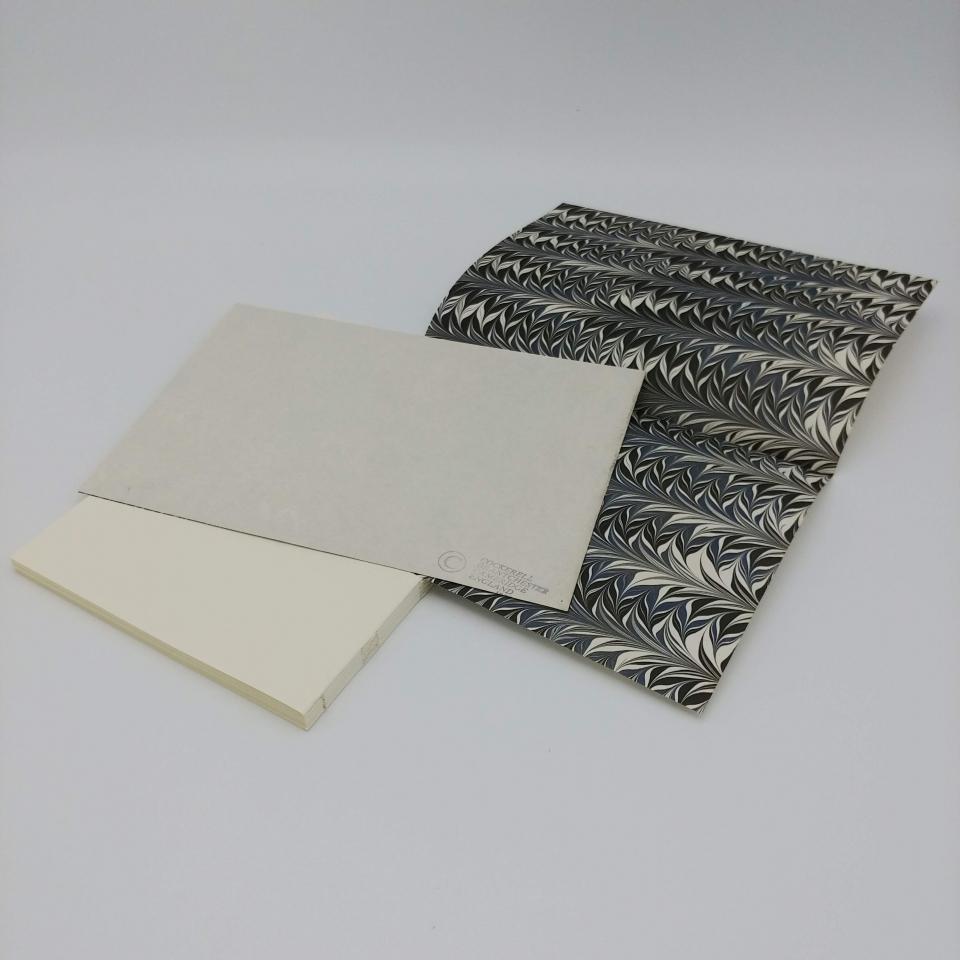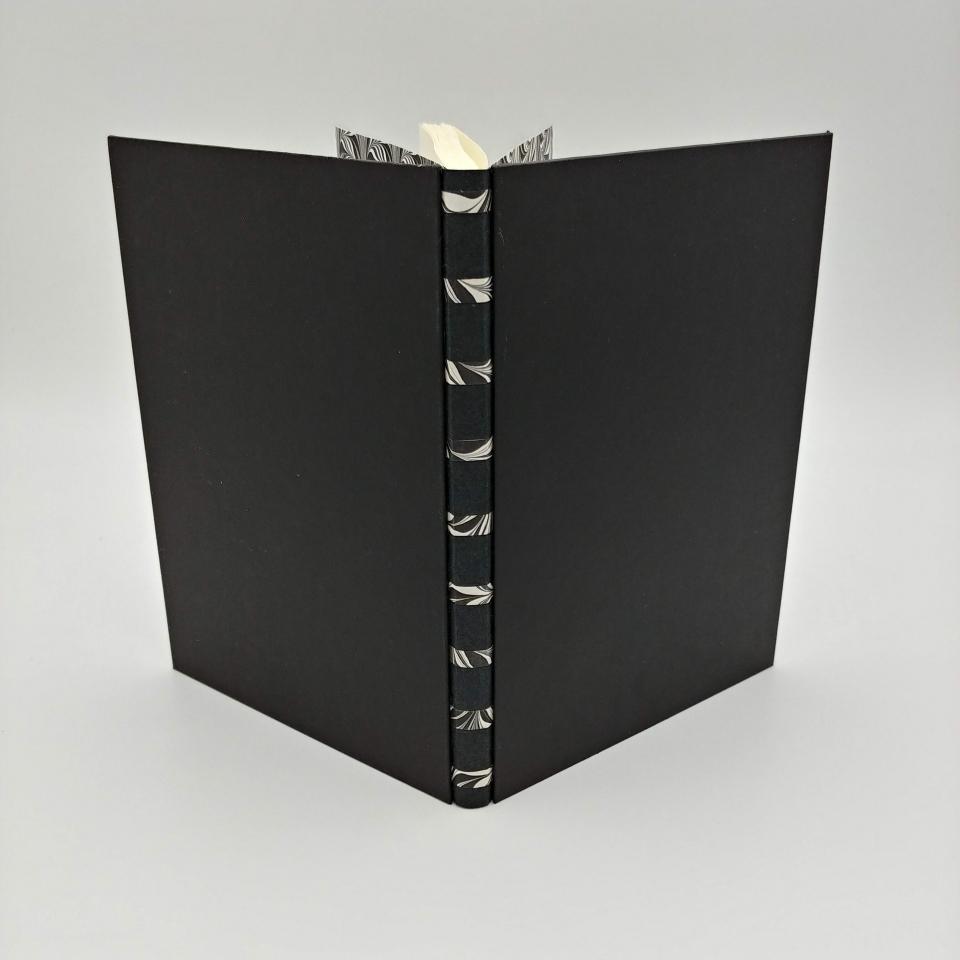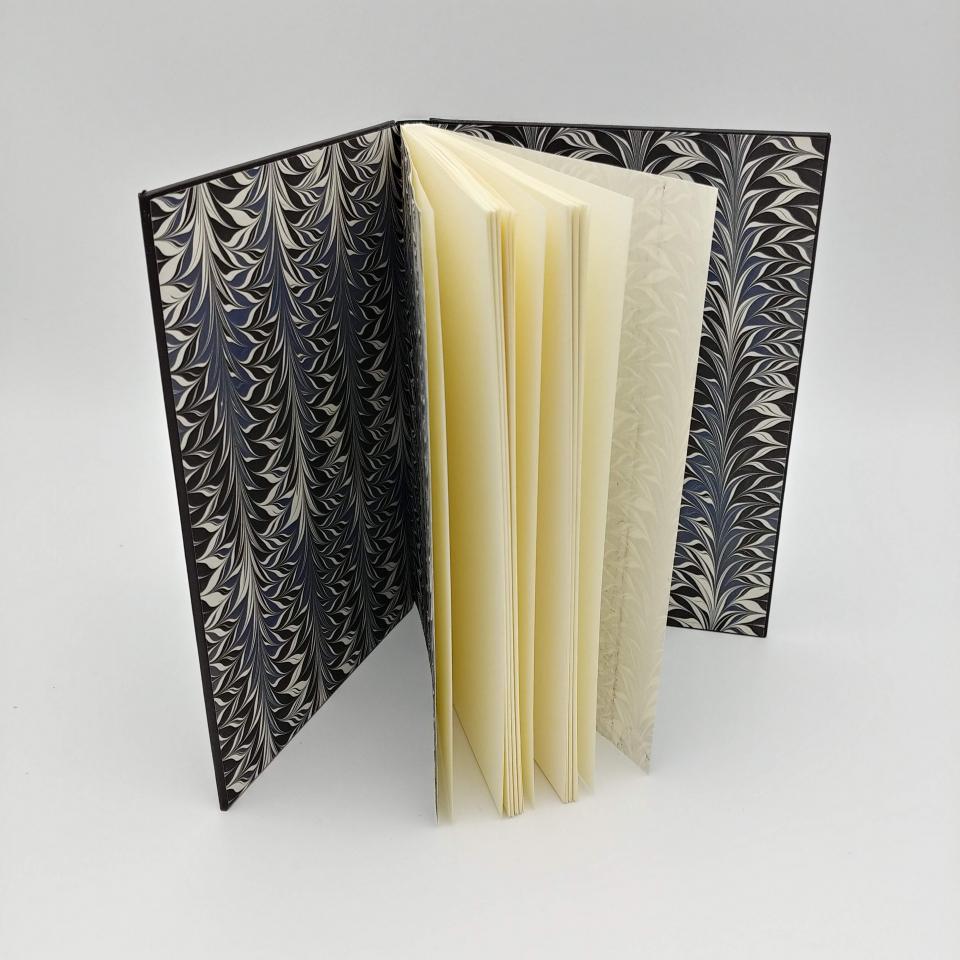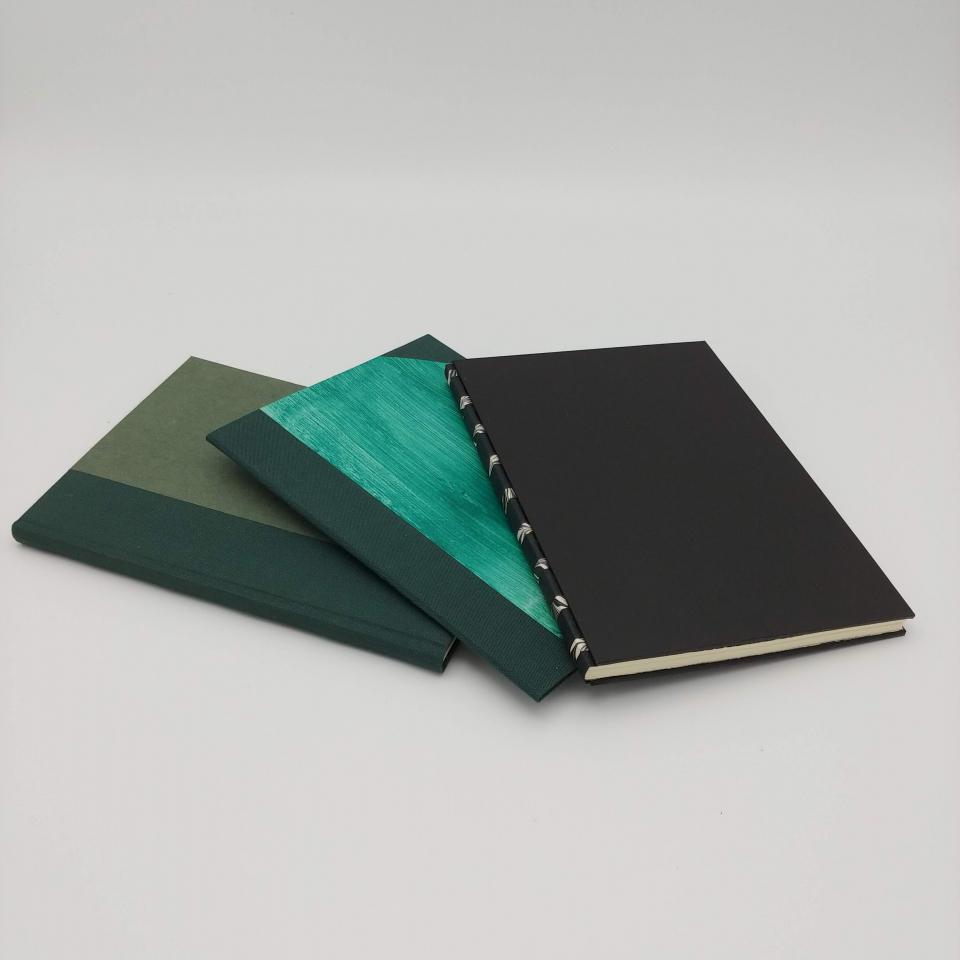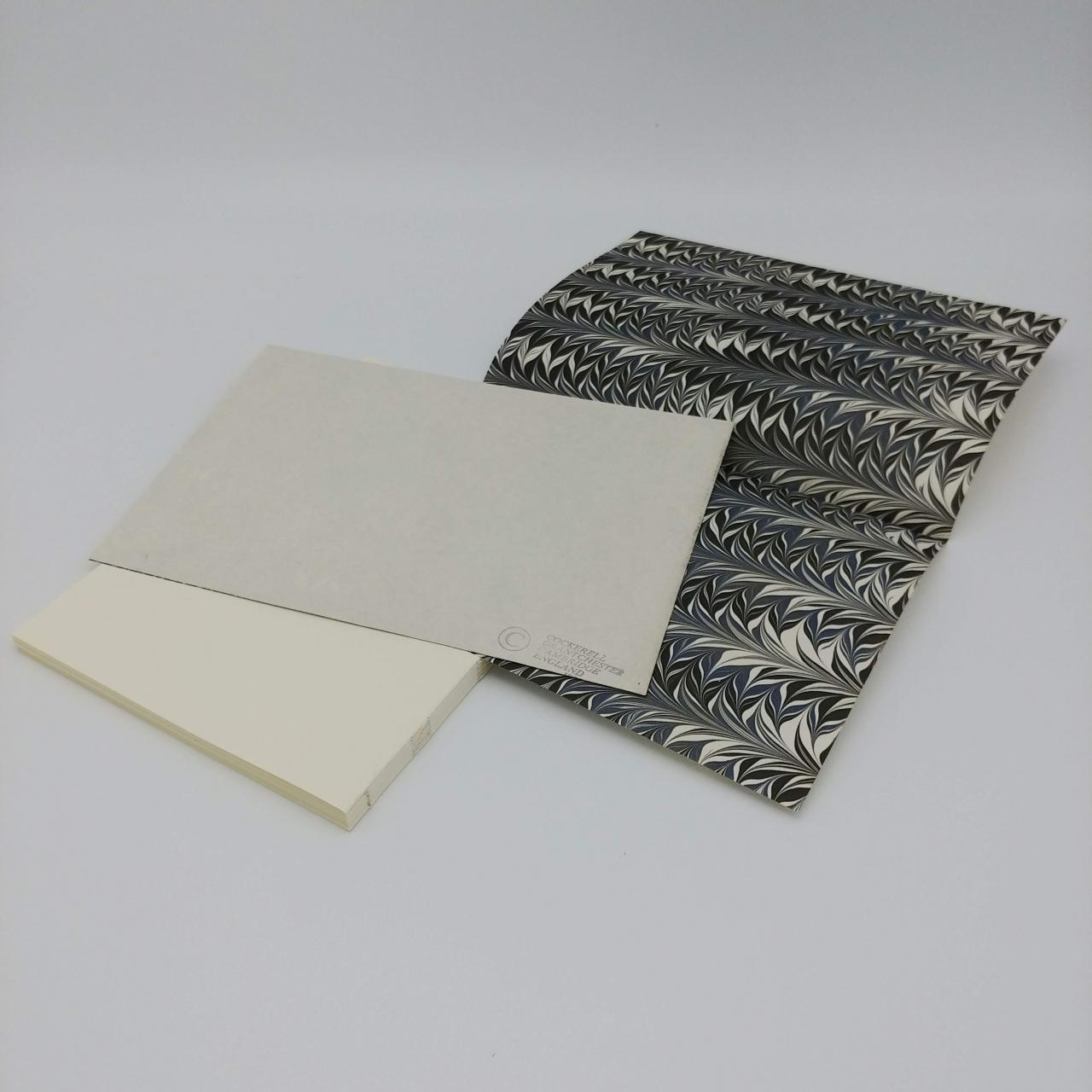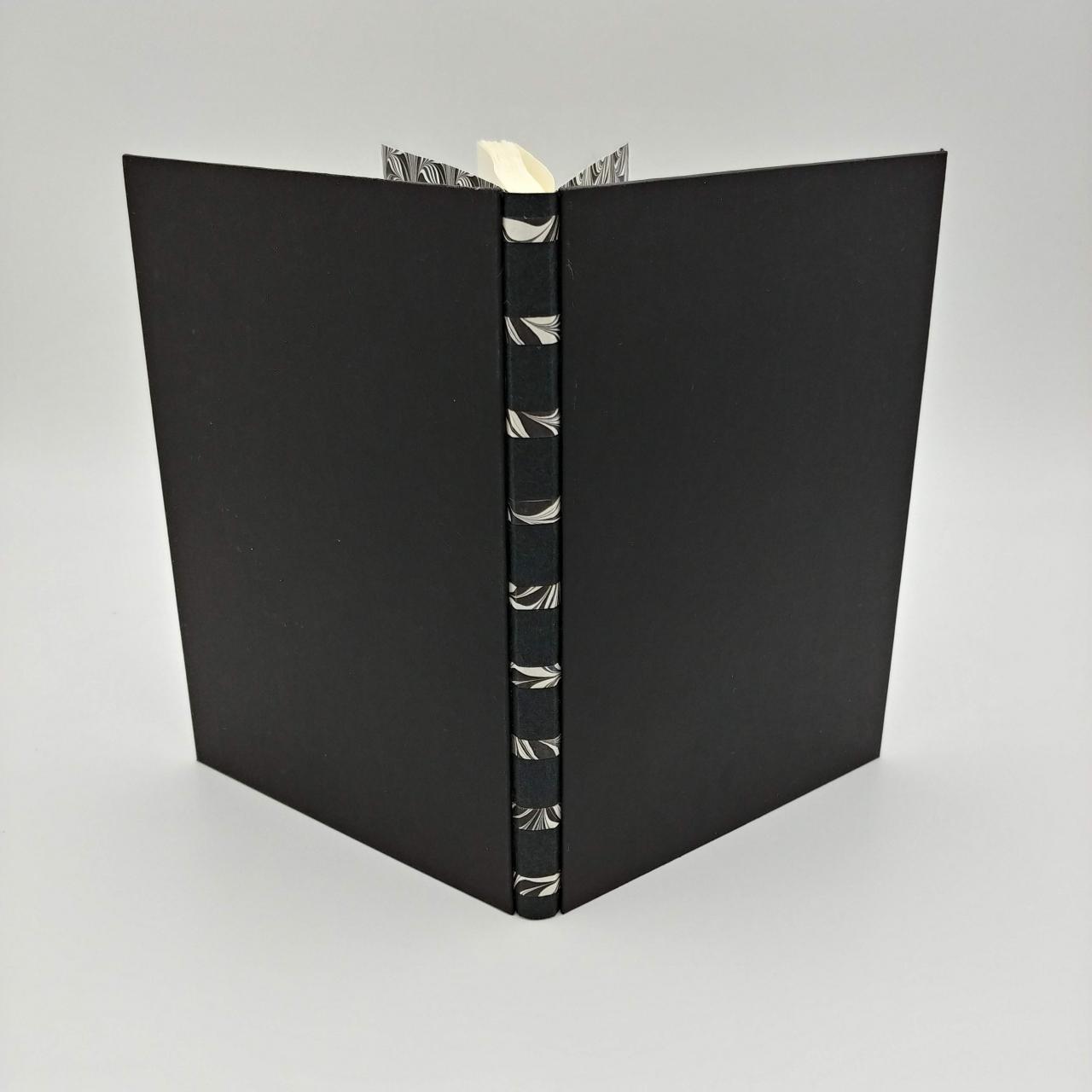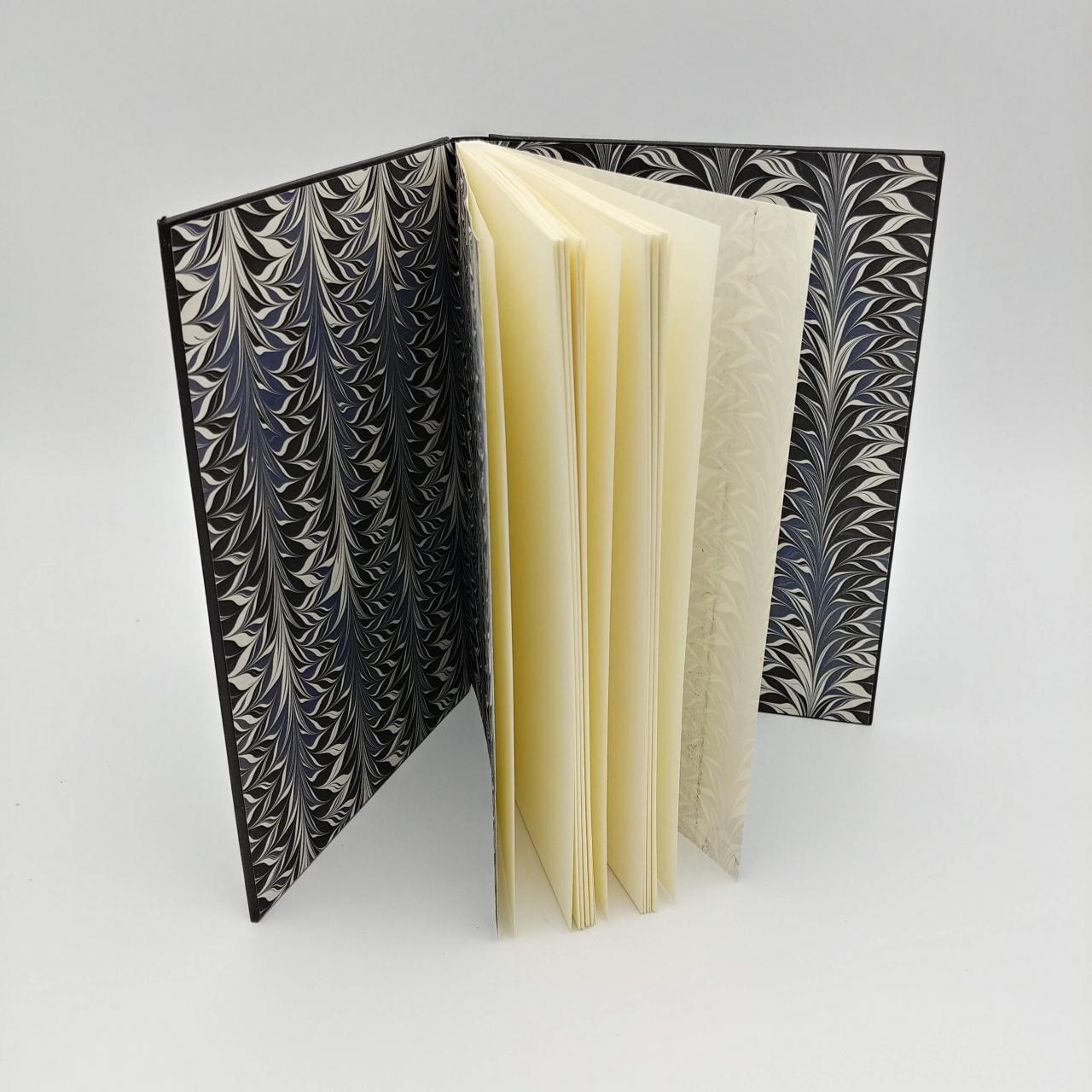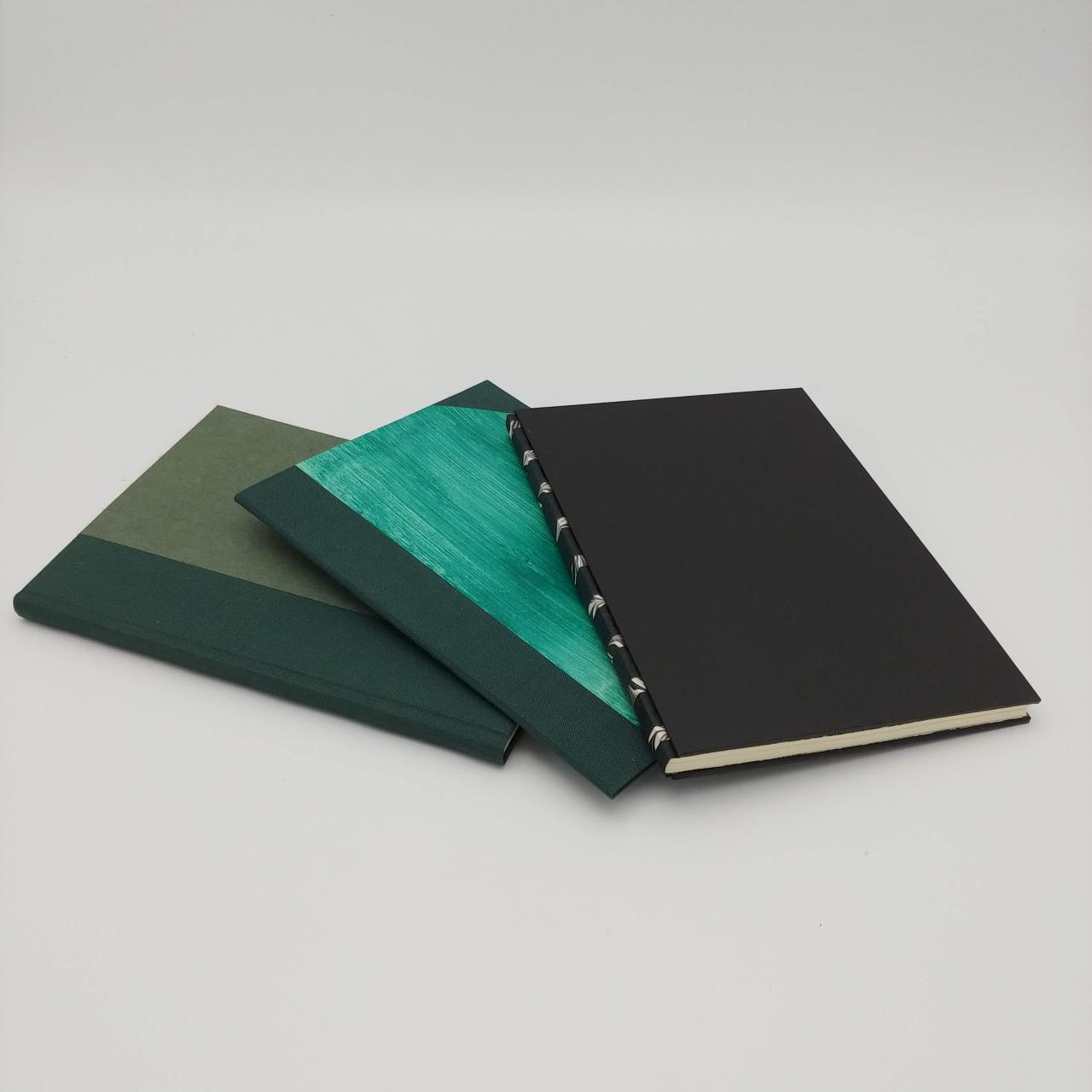Endpaper Challenge #3
2018-10-27
Endpaper challenge #3 is a simple tipped on endpaper. Arthur Johnson describes it as “the cheapest and weakest, 3, is not sewn but tipped on the section for 3mm. All publishers’ edition bindings have this endpaper.” The photo above shows the textblock sewn with the endpapers ready to be tipped onto the first and last signature/section. The endpapers are Cockrell marbled papers that Flora sent me with some other marbled papers that I will use for the other endpaper challenge books.
I wanted to incorporate some of the marbled paper for the spine piece. Originally I thought I would have enough offcuts for the whole spine to be made out of the marbled paper, but then there wasn't enough so I figured out a way to incorporate the offcuts that I had. I stuck strips alternating the marbled offcuts with black Japanese paper onto a bigger piece of black Japanese paper. The small strips of black Japanese paper is the same thickness as the marbled paper so that there isn't a difference in the paper thickness.
This method is not structurally sound as the textblock is essentially only tipped on with the endpapers. Considering the size of this book, it shouldn't really be an issue. With commercially made books, I have seen a lot that are made this way and that through general wear and tear the textblock falls out due to ripping of the endpapers. The leather binding that I do with my students is similar to this endpaper and throughout the years none of my students have told me that their books have any issues. It is a quick endpaper method and tipping on gives the fly leaves more flexibility. One thing to keep in mind is that if you use a marbled paper you need to find one where the back doesn't have any pigmentation and the base paper matches the colour of your textblock.
Here's a photo of book 1, 2 and 3. So far it's been quite interesting to think about how these end paper methods can be used for what type of binding. I hope that with this challenge we will be able to think about the structural issues and also how to be able to adjust the different methods to suit the book that we are binding.
